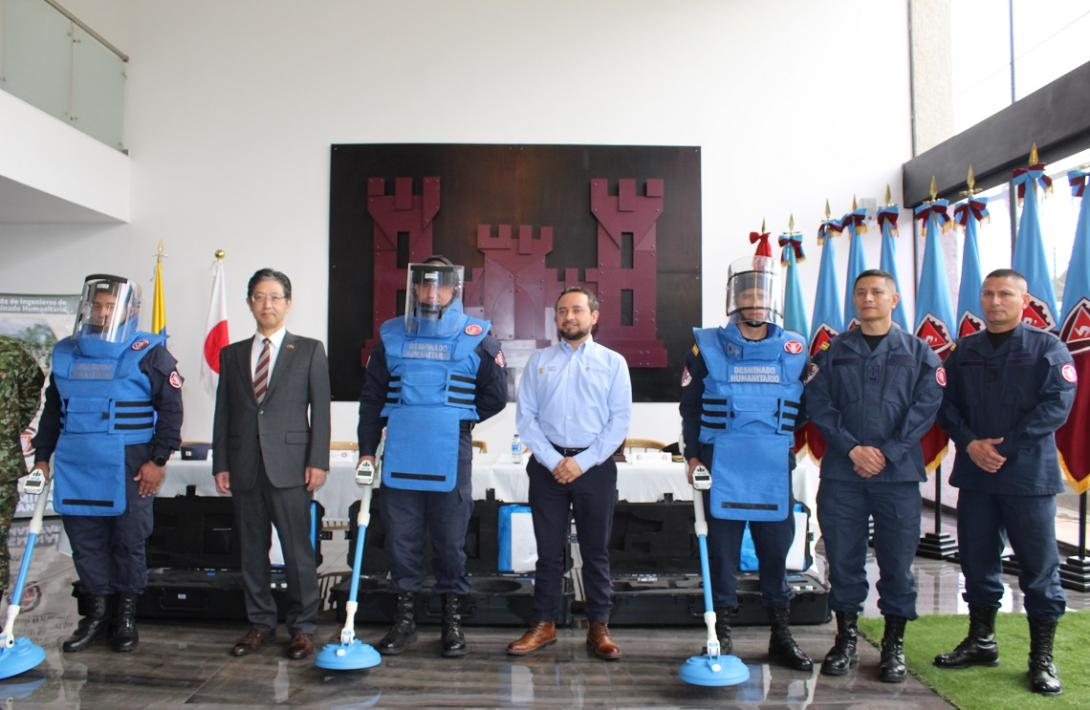In a protocol ceremony, the government of Japan provided a new tool to strengthen Colombian National Army's humanitarian demining operations in Colombian territory.
There are three ground-penetrating radars that will be used in departments such as Caldas, Santander, Tolima, Caquetá, Meta, Huila and Putumayo.
This advanced landmine imaging system (ALIS) consists of an image sensor that leads to a metal detector or a radar to use it effectively and accurately.
In this way, mine clearance specialists will be able to obtain visual representations to identify explosive devices, such as an anti-personnel mine, used unexploded ordnance and improvised explosive devices.
With this type of radars, it makes it easier for mine clearance specialists to detect variations in the terrain, even in sites with high sources of interference such as power towers, communication towers, electric fences, petroleum pipelines and railway lines.
Unlike the metal detector, the penetration radar includes an alternating screen that shows the variations in the terrain and can detect large objects, facilitating the visualization of foreign elements in the area.
With the implementation of this system, Colombian National Army's humanitarian demining is at the forefront of the technology used in countries such as Cambodia and Bosnia and Herzegovina to find deadly traps with different methods of creation and activation.
This year, humanitarian demining operations have led to have ten municipalities declared free of suspected anti-personnel mines. More than 662,000 square meters have been intervened and 51 explosive devices have been destroyed.
Source: Press - Humanitarian Demining Brigade





